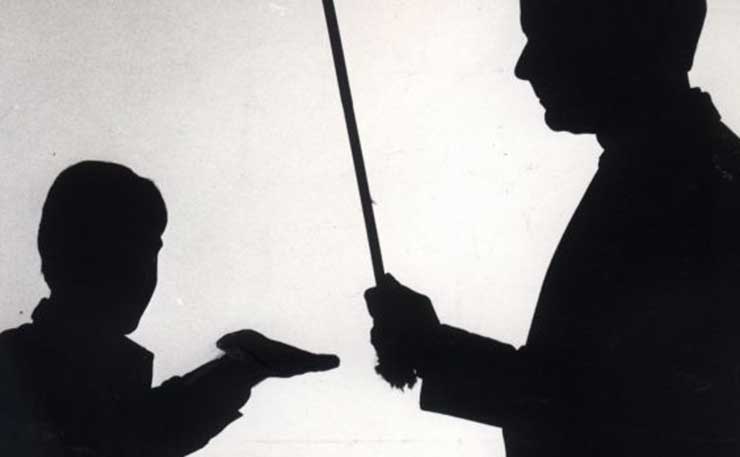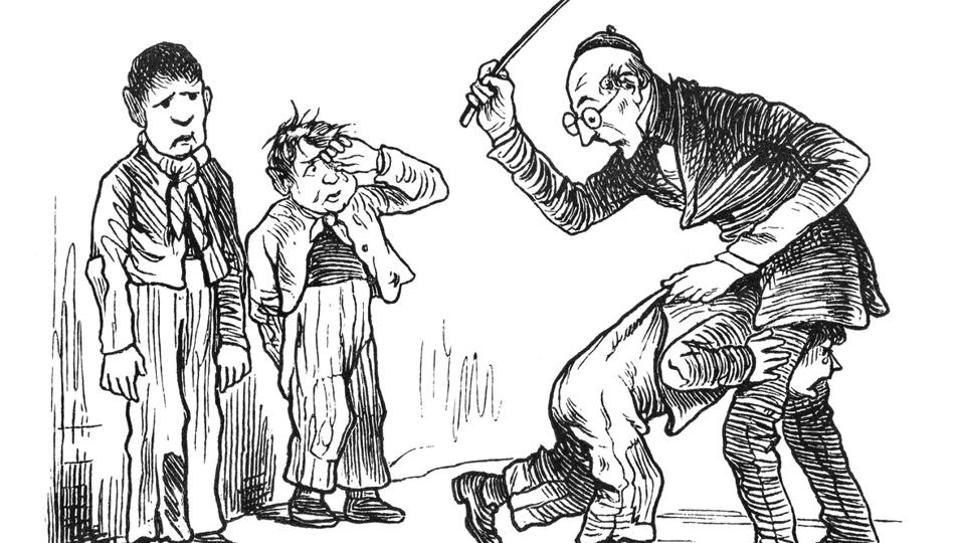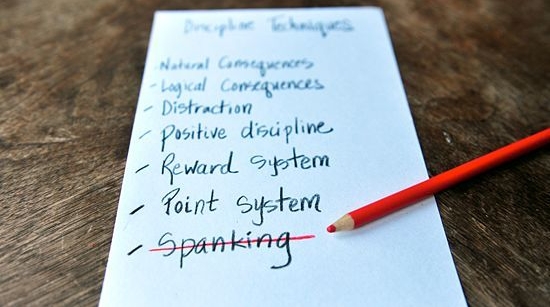
Teachers are aware of the harmful effects of physical and verbal punishment. They know that slapping, hitting, and spanking can cause violence, destroy self-esteem, cause anger, and destroy the relationship with students. But you know what’s important, teachers should know what to do instead.
School Discipline Policy Punishment, such as suspension and expulsion, allows teachers to remove students from class for misconduct. However, recent research shows that these practices also increase the likelihood that students will be out of school, drop out entirely. After all, all of these approaches miss out on the best learning opportunities. The students are distracted by fantasies of revenge, where they are too distracted to focus on the real problem. Real alternatives to punishment are those that help students grow in a healthy way. There is no greater joy in life rather than letting our students teach what love is.
Why You Shouldn’t Punish Students Physically?

A study by Elizabeth T. Gershoff from 2008 states that the effects of physical punishment on students in the United States found no lasting effect on behavior change; in fact, when the threat of punishment goes away, negative behavior returns.
Hitting students does not teach them responsibility and self-control. Additionally, students learn by watching their parents. Parents who use physical discipline teach their children how to deal with conflicts with physical abuse. Researchers have found that spanking can increase student’s aggression levels and reduce the quality of teacher-student relationships. The purpose of this resolution is to encourage effective disciplinary action against teachers that do not contribute to aggression and trust issues.
- This doesn’t work and can even worsen behavior problems over time. For example, corporal punishment increases violent behavior.
- This is associated with an increased likelihood of mood disorders, anxiety disorders, and personality disorders.
- Punishment prefers positive strategies for resolving conflicts with colleagues and siblings and does not see this as a violation of their rights.
- When teachers use physical punishment, spanking is taught as an acceptable method of conflict resolution.
Effects of Physical Punishments on Students
Punishment of students continues to be a big problem around the world. Various types of studies from around the world have clearly established that the use of physical punishment in schools is associated with the proportion of those who exhibit violent behavior, poor school performance, and family conflict. It also analyzed the long-term and short-term adverse effects of physical punishment on students and suggested strategies for disciplining students.
1. Low-esteem:
Students develop a mindset to avoid difficulties without even trying to accomplish them. And they give up easily. They become adamant by hiding their feelings of frustration and incompetence. Self-critical comments like “I’m not good at anything”, “Why am I not important?” and so on will become part of the student’s personality.
2. Fear:
Physical punishment can make students fearful. The rule of fear can exclude student life if viewed as a simple punishment. Out of fear, they will try to study well, but not for the sake of learning. Fear paralyzes the minds of students as they do not realize their full creative potential.
3. Loneliness:
When students are punished, especially in class in front of classmates, they feel uncomfortable and embarrassed. The punished student will start to look like a spoiled boy/girl in trouble. Loneliness cripples their personality, leaving a black mark in his mind.
4. Guilt:
Using guilt to help stop old behaviors and learn new ones can make you feel lonely and responsible for not having school fun. Using guilt to motivate a student can overwhelm a student’s ability to learn social behavior as well as destroy student-teacher relationships.
5. Depression:
If we continue physical punishment and loneliness, that leads to depression. When a student becomes depressed, they are considered lonely because there is no one around to talk to or listen to.
6. Suicidal thoughts:
Depression gives rise to suicidal thoughts. The rest is conceivable. The last thought that comes to a student’s mind is to commit suicide, and it all starts with physical punishment in the name of discipline.
Punishment has its place as it can stop unwanted behavior. Although we cannot control our students, we can influence them. Learning self-control and learning from its consequences is something that will help them throughout their lives. But be aware of the negative consequences that come with it. Frequent or severe punishment contributes only to temporary submission.
Positive Alternatives of Physical Punishment For Students

1. Take a Timeout:
Timeout was originally designed to help students work on their emotions in a physically safe space, but today it is often used as a tool to control students. Students misunderstand that this will help them become better. They will have many thoughts about timeouts, like how not to get caught, how to make adults happy, but they will not think about what they did.
2. Connect with them:
This action may require attention, even if they deny it. Sometimes you just need to hug or try to connect with your student. This can be especially effective in showing empathy in these situations. You can give examples from your own experience, but in any case, your students will feel comfortable knowing that they are not alone in their feelings.
3. Provide them with choices:
Students can make bad decisions when they feel stuck in a situation that has no other options. Sometimes they just need the opportunity to speak up. This is not an offer to reward negative people’s behavior but rather a way to present options as a solution.
4. Give yourself a timeout before responding:
Sometimes the behavior of students evokes emotions and reactions in us that have absolutely nothing to do with them. We are teachers, which means we have a lifetime of triggers and a schedule that causes fatigue, take a deep breath; if we need a little space before we can calmly react, we can avoid choosing an answer that we are likely to regret.
5. Use Parental Controls:
It is important that students always have access to relevant content to ensure a safe Internet, especially in an educational environment. Parental control software continuously monitors web browsing, study behavior, YouTube, and GEOlocation so that no student is at risk and can use their digital device properly even outside of school. This also prevents internet threats like cyberbullying and depression.
6. Give them time along with an expectation:
Just as it may take us a minute or two to adapt to a situation or respond to a request, we can expect the same from students. If the student refuses to do something, you can set aside some time with their request. You can say something like, “Dear, let me know when you’re ready to share your emotions.” This will give them the opportunity to feel that they did it of their own choice and not yours.
7. Accept your students’ choice:
We wish our students to make the right decisions. We do our best to encourage correct decisions to the point where they could be classified as manipulation. State the consequences and let them teach, instead of trying to punish them so that they behave well.
8. Observe:
Once you have taken the time to map the classroom and become aware of what makes you react, take time to relax and observe calmly. Try to watch from different angles. You will get a new perspective and the ability to avoid reflexes.
9. Rewarding their good behavior:
Rewards have the added benefit of helping students feel good, while punishment makes them feel bad about themselves and resent you.
10. Know what they want:
If you know your students are misbehaving in order to get attention, pay special attention when they misbehave. If your students want to be hit, avoid physical punishment for wrongdoing, but engage in physical contact like hugging or patting.
11. Choose appropriate punishments:
Always choose a punishment that is a natural consequence of the misconduct, like ” You can’t play.” If it doesn’t seem to work even with constant use, this is not a ‘punishment’ for your students, and you should try something else.
12. Losing Privileges:
The goal should be not to punish the students but to help them learn to make better decisions in the future. However, it takes practice. If they make a bad decision, teach them that the consequence is loss of privilege. Check when the privileges can be restored. Usually, one day is enough to teach a student to learn from their mistakes.
13. Teaching new skills:
One of the main problems with punishment is that it doesn’t teach your students the best manners. And if you hit them, it won’t teach them how to calm down the next time. Teach them problem-solving and how to handle their emotions. When teachers teach these skills, behavior problems can be significantly reduced. Use discipline to teach, not punish.
14. Be realistic:
There is no point in punishing a crying student in front of a class, as this is to be expected of students of all ages. In case of physical danger, make sure that your student cannot reach open flames.
15. Use guidance and counseling methods:
Teaching and counseling methods can be used more effectively. In such situations, call a relative, if necessary, someone with whom the student has a special relationship or an older person in the family or community that the student actually has a request to. And let them have an open conversation.